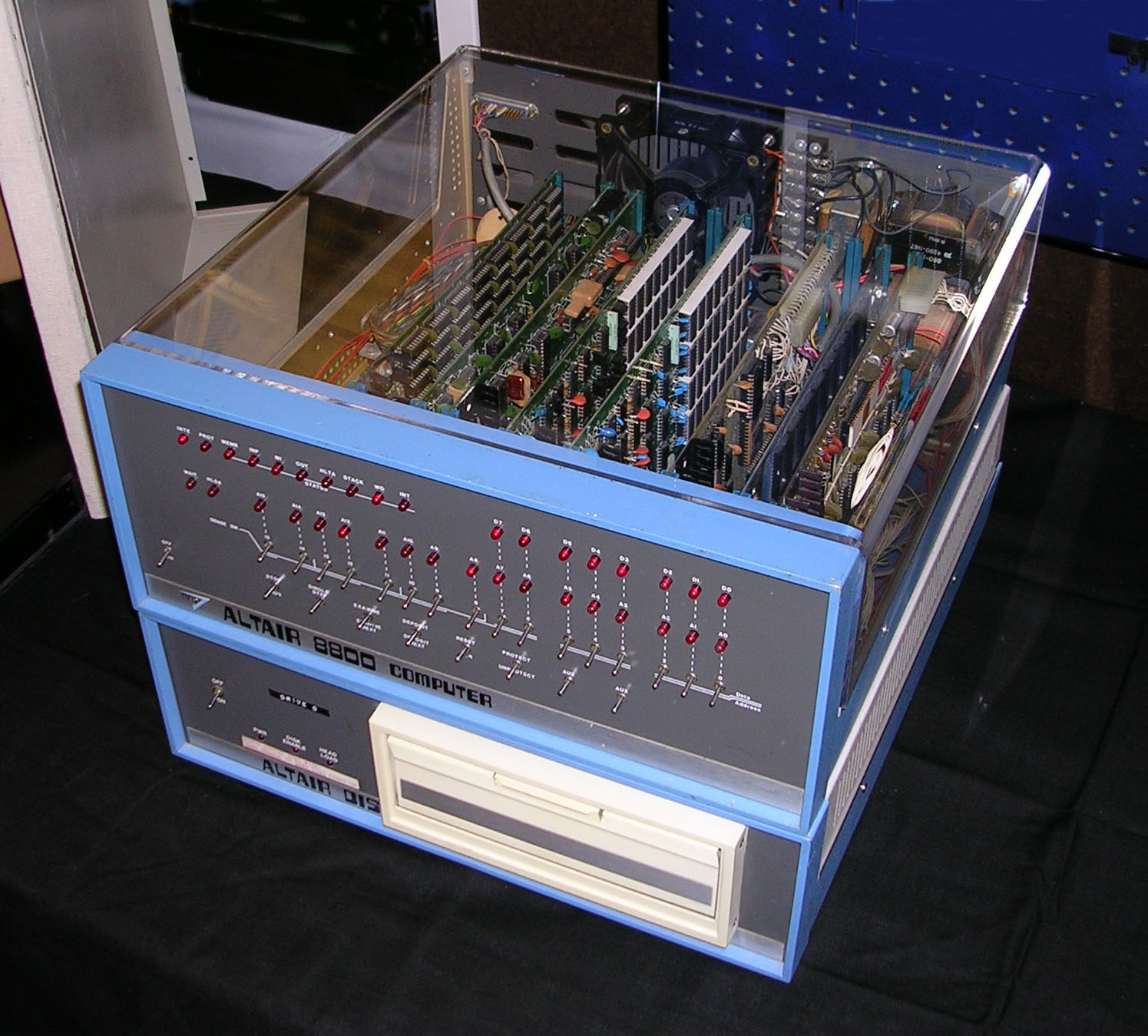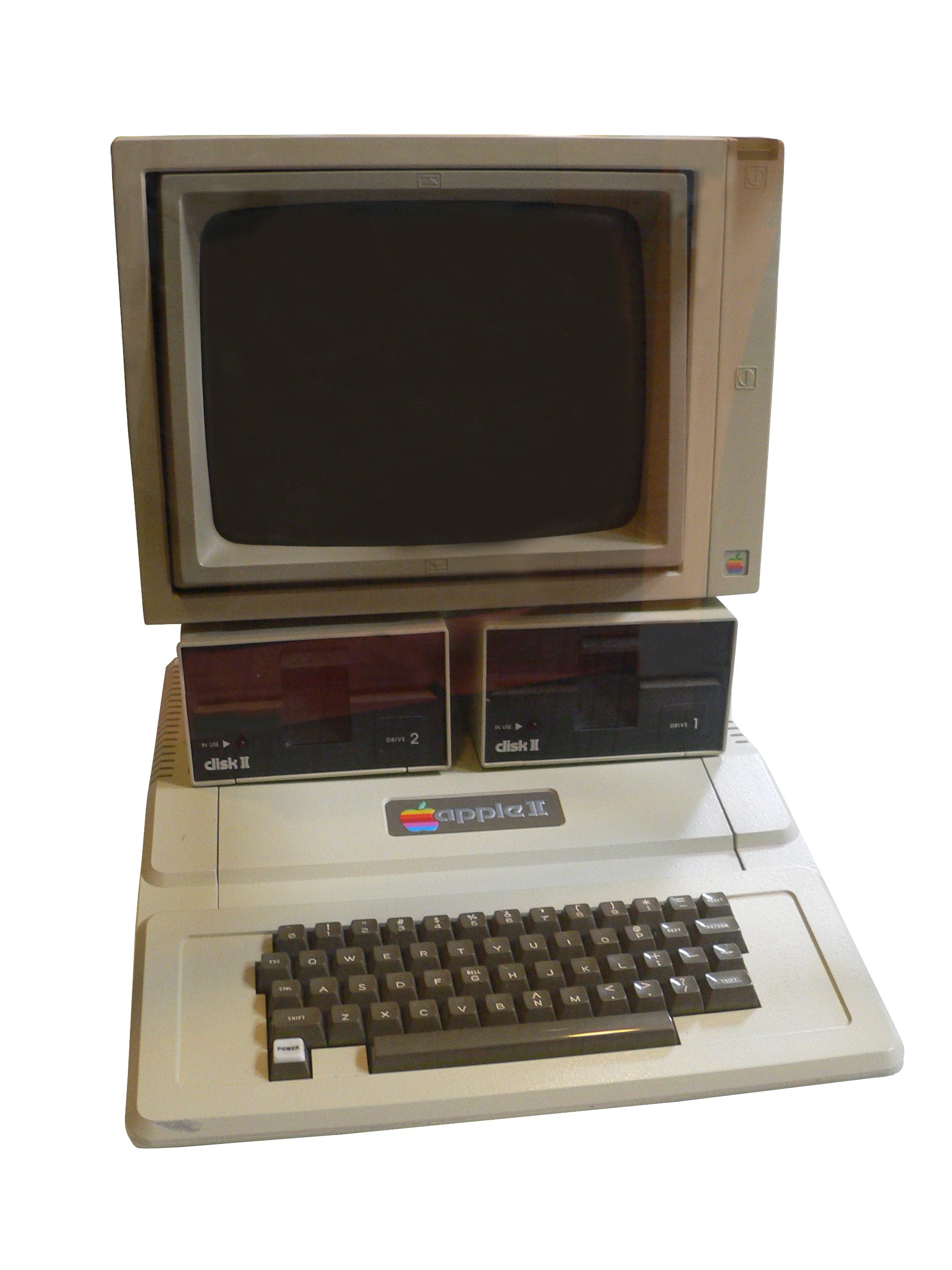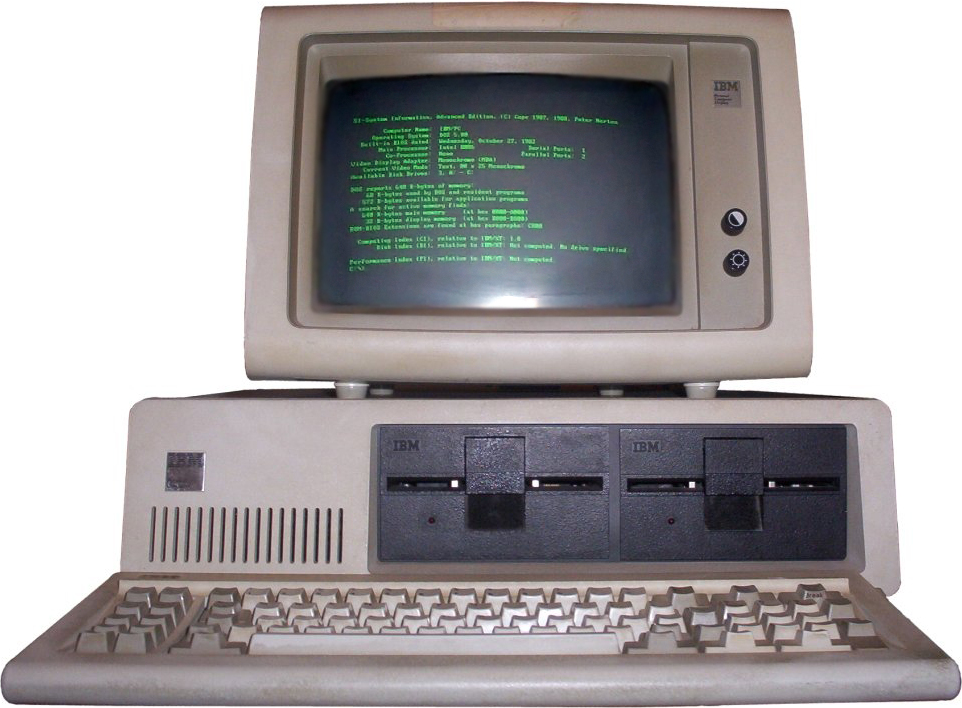
I looked at an Apple II PC, but didn't get it ...

I looked at an IBM PC 8088, but didn't get it...

I looked at a Macintosh, and I did get it ... :-)

And finally today ... it's ...

Posted on 04/26/2010 10:57:26 AM PDT by ShadowAce
Well, yeah--that's what I meant. There's no political will to take unused/unneeded addresses away from the squatters.
Came with 16K of RAM.
LOL
“DoD is waiting until they JITC certify all of their stuff first, then everyone else we be able to use it.”
I’m not holding my breath..........
Nope, not when they don't have the will to face much larger problems.
I suppose we'll get IPv6 and the squatters will be sitting on a big pile of worthless addresses.
I had a color computer and it came with 4 k ram.
Being the computer genius I am, i was able to buy and install the 64 k ram available if desired
Trepidation is the word for cracking the case open
“Nobody will ever need more than 640k RAM!” - Bill Gates, 1981
The same thing can be done with IPv4 addresses. Just add a 00-00 to all the existing IPv4 addresses. Computers are using these addresses anyway so it shouldn't be too hard for them to recognize that only four IDs are being given in an address and add the two zero IDs wherever they are needed.
ML/NJ
Cue the guy rubbing his brow, saying “Oh geez, not this (*&*& again!”
We were hearing this sort of stuff at cisco in 1995/1996. We came up with NAT. Then the IETF came up with non-routed network spaces.
Every two years, there’s been another story just like this one. Somehow, the v4 address space continues to hold up, just fine.
Because back then computers were big, expensive machines and IPv4 was considered very generous.
The problem with this sort of fix is that the IP address parsing logic is embedded in microcode, ASIC’s and low-level drivers all over the place. Retrofitting this sort of scheme onto the 32-bit v4 addresses just won’t fly.
This is why things like NAT and tunneling work well - you don’t have to change the 32-bit v4 address, you just accumulate a lot of them behind one address that you route out into the “big-I” Internet.
|
IPv4 |
IPv6 |
| Addresses are 32 bits (4 bytes) in length. | Addresses are 128 bits (16 bytes) in length |
| Address (A) resource records in DNS to map host names to IPv4 addresses. | Address (AAAA) resource records in DNS to map host names to IPv6 addresses. |
| Pointer (PTR) resource records in the IN-ADDR.ARPA DNS domain to map IPv4 addresses to host names. | Pointer (PTR) resource records in the IP6.ARPA DNS domain to map IPv6 addresses to host names. |
| IPSec is optional and should be supported externally | IPSec support is not optional |
| Header does not identify packet flow for QoS handling by routers | Header contains Flow Label field, which Identifies packet flow for QoS handling by router. |
| Both routers and the sending host fragment packets. | Routers do not support packet fragmentation. Sending host fragments packets |
| Header includes a checksum. | Header does not include a checksum. |
| Header includes options. | Optional data is supported as extension headers. |
| ARP uses broadcast ARP request to resolve IP to MAC/Hardware address. | Multicast Neighbor Solicitation messages resolve IP addresses to MAC addresses. |
| Internet Group Management Protocol (IGMP) manages membership in local subnet groups. | Multicast Listener Discovery (MLD) messages manage membership in local subnet groups. |
| Broadcast addresses are used to send traffic to all nodes on a subnet. | IPv6 uses a link-local scope all-nodes multicast address. |
| Configured either manually or through DHCP. | Does not require manual configuration or DHCP. |
| Must support a 576-byte packet size (possibly fragmented). | Must support a 1280-byte packet size (without fragmentation). |
What authority does the IETF or IANA have to take the Class A blocks away from them?
None. Those who still hold an old Class A address block have maintained it according to the requirements, so they’ve violated no rule, etc. And most of them, I would add, got those address blocks back when it was ARPAnet.
Some of those organizations would have to do a LOT of work to convert their intranets into a NAT+private net setup.
As a result, of course they’re going to push back on giving up their old address blocks.
You’re correct. They don’t have the authority. I wasn’t advocating it—merely discussing the issue.
Short-sighted.
Back when v4 was created, a 32-bit address space was a BIG freakin’ deal. It was considered flippin’ HUGE.
At the time, the IMP (Internet Message Processors) were 16-bit minicomputers with less CPU power than your cellphone. Mainframes were the only computers with 32-bit address spaces or even native 32-bit math operations. The prevailing 16-bit minicomputers used for routing processors needed to handle the 32-bit addresses (remember, there is one for destination and one for source) in four 16-bit wide chunks.
Going to 128 bit addresses back then would have made everything significantly more slow than it was. Again, remember there is a source and destination address, so we’re talking 256 bits (or 16 16-bit words) of fetching, never mind processing, just to deal with the address block.
Minicomputers back then typically had no more than 64KB of memory, and usually 8kB of that was reserved for IO address space, so you really had only 56kB of usable memory.
No one wasted even a byte back then. No one could have foreseen the explosion of what was ARPAnet into a worldwide network. ARPAnet wasn’t even available to the civilian market in the US, and you had to be apply or be invited to join it in the 70’s.
Most network address schemes back then didn’t have even 32 bits. XNS had only 24 bits of address space, and it was hacked up into an eight bit network address and 16 bits for the station. DECnet was similar, but even smaller, AppleTalk was like XNS, etc. X.25 addresses were overlaid on telephone numbers, because telco switches were used to route the circuit calls.
As someone who started doing computer networks in ‘84, I can tell you that none of us thought it would get this big. No one. None of us thought there might be a day when the utilities were going to try to assign an IP address to ever meter on their system, no one thought of using IP packet networks to carry phone calls, no one thought of IP as being in your TV VCR equivalent.
Not even the most starry-eyed dreamers back then envisioned this explosion of the IP network - or ANY network, for that matter.
Lots of large companies and universities have Class A addresses. It’s not a very good use of space.
*Ding!*
Exactly so.
You were unusual.

I looked at an Apple II PC, but didn't get it ...

I looked at an IBM PC 8088, but didn't get it...

I looked at a Macintosh, and I did get it ... :-)

And finally today ... it's ...

Disclaimer: Opinions posted on Free Republic are those of the individual posters and do not necessarily represent the opinion of Free Republic or its management. All materials posted herein are protected by copyright law and the exemption for fair use of copyrighted works.